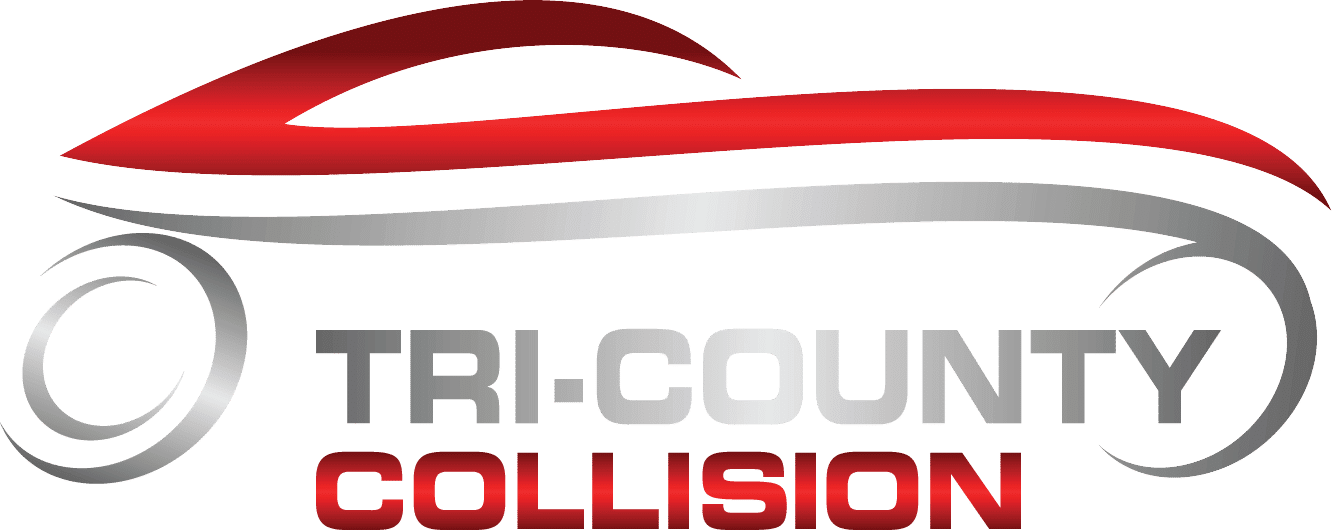Today’s vehicles quietly watch the road for you, braking in a split second, reading lane lines, and warning about the car in your blind spot. That tech is called ADAS (Advanced Driver Assistance Systems). After even a “minor” accident or glass/bumper repair, those cameras and sensors can shift by millimeters. If they’re not calibrated, the system may misread the road. At Tri County Collision Center, we treat calibration as a safety-critical step, not an add-on.
What is ADAS (and which features use it)?
ADAS is the network of cameras, radar, ultrasonic sensors, and sometimes lidar that powers features like:
- Forward collision warning & automatic emergency braking
- Lane keep assist and lane departure warning
- Adaptive cruise control
- Blind-spot monitoring & rear cross-traffic alert
- Parking sensors, surround view, self-park assist
- Traffic sign recognition, driver monitoring (on some models)
These features rely on precise alignment to the vehicle’s centerline, ride height, wheel alignment, and windshield/bumper mounting points.
When are calibrations required?
If any of the following happened, assume calibration is likely needed. We’ll confirm with a pre-repair scan and your manufacturer’s procedures:
- Windshield replacement or work near the front camera (inside the glass)
- Pair with our Auto Glass Repair & Replacement so calibration is scheduled seamlessly.
- Front or rear bumper repair/replacement; grille or emblem removal (radar lives here on many models)
- Side mirror replacement (often houses cameras/radar for blind-spot)
- Roof, fender, liftgate, or tail lamp work on vehicles with surround-view or rear radar
- Airbag deployment, structural repairs, or anything that alters geometry/ride height
- Wheel alignment, suspension, or steering component replacement
- Any time an ADAS sensor/camera was removed, replaced, or unplugged
- DTCs (trouble codes) found during pre or post-scan
There are two common methods: static calibration (targets on a level bay with exact measurements) and dynamic calibration (a specific drive cycle with a scan tool). Many vehicles require both.
How long does it take (and what does it cost)?
Every make/model is different, but here’s a realistic, expectation-setting guide:
- Timing: Same-day to 1–3 business days, depending on the vehicle, required procedures (static, dynamic, or both), weather (dynamic drives), and parts availability.
- Costs: Calibrations are often itemized on the repair plan and commonly covered as part of an insurance claim when the repair requires them. Out-of-pocket varies by vehicle and number of systems involved; multi-system calibrations add up. We’ll outline it before work begins so there are no surprises.
We’ll never guess. Your plan references the vehicle manufacturer’s procedures and the exact systems impacted by your repair.
How Tri County coordinates calibration (start to finish)
- Pre-scan & blueprint – We scan the vehicle, photograph mounting points, and map which systems were affected.
- OEM-procedure plan – Your estimate calls out required static/dynamic calibrations, aiming specs, and any alignment/ride-height prerequisites.
- In-house or partner scheduling – We perform many calibrations on site; for brand-specific targets or equipment, we coordinate with our vetted calibration partner or dealer.
- Post-repair calibration – Per OEM timing (often after refinishing and reassembly) so sensors “see” their final installed environment.
- Post-scan & road test – We verify no ADAS faults remain and that features perform as designed.
- Documentation delivered – You leave with a clear paper trail (see below).
Proof you should expect in your paperwork
You’ll receive a calibration packet with:
- Pre and post-scan reports (DTCs before/after)
- Calibration certificates for each system addressed
- Target setup photos/measurements (for static procedures)
- Alignment printout if required by the OEM
- A final quality checklist signed by our technician
Keep this with your records. It’s useful for future service visits and resale.
Systems commonly affected (quick checklist)
Use this as a simple reference. If your repair touched any line below, calibration is often required:
- Windshield / front camera
- Front bumper / grille / emblem (radar)
- Side mirrors (blind-spot / camera)
- Rear bumper (cross-traffic / parking sensors)
- Liftgate / tail lamps (rear radar / camera)
- Roof / fenders (surround view cameras)
- Steering / suspension / wheel alignment
- Airbag deployment / structural repairs
Not sure? Ask, we’ll check your VIN against manufacturer procedures.
Why this matters
Calibration isn’t about dash lights; it’s about distance. A camera that’s off by a degree or a radar that’s pitched low can delay automatic braking or tug the wheel at the wrong moment. Doing this right restores the safety margin your family counts on.
Ready for help?
- Have glass damage or a cracked windshield? Book Auto Glass Repair & Replacement and we’ll coordinate the calibration step for you.
- Need full accident repair with calibration built in? See Collision Repair for how we return your vehicle to pre-loss condition, safely and completely.
- If you’ve got a question about your specific make/model, call us and we’ll review the calibration requirements with your VIN before you schedule.
